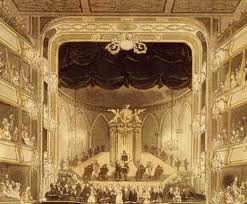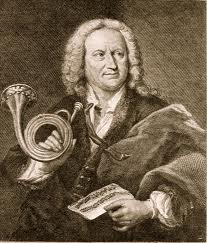
Classical, Concerto, Works
Mozart’s twenty-seven piano concerti represent the absolute apotheosis of the form: in the same way that Haydn perfected the string quartet, Mozart took the piano concerto and brought it to its peak.
His later works in this genre, written in Vienna under increasingly difficult conditions of financial worry and illness, seem to reach for ever greater heights of expression and classical grace. They are at once brilliant and impressive, yet never border on being shallow or superficial; indeed, they explore the entire range of human emotion. The balance between orchestra and soloist is nothing short of miraculous, and the intensity of expression that is achieved with astonishingly simple means is unsurpassed in the literature. In a way, perhaps these concerti can be called the most ‘Mozartian’ music of all.
The C minor concerto has justly become a perennial favorite. One of Mozart’s most personal creations, it is forceful and tragic, full of shadows and darkness. He completed the work in March 1786, premièring it in April, when he conducted from the keyboard. Perhaps most remarkable is the richness and complexity of the woodwind writing throughout, interacting with the soloist in a perfect partnership usually only found in chamber music.
The first movement, uncluttered and completely lacking in embroidery, never once sacrifices musical expression for sheer virtuosity. After such drama, no one else could have written such a transcendently beautiful larghetto, cast here in crystalline rondo form of almost divine simplicity. The work finishes with a set of variations, rushing to a dramatic close with a crushingly tragic coda in 6/8 time.

Baroque, Concerto, Works
Handel was a keyboard virtuoso as well as a great composer. He wrote 15 organ concerti between 1735 and 1751, and has been credited as being the first to compose an organ concerto. In addition to utilizing the “king of instruments” as a solo voice, Handel left plenty of room in these works for his own improvisation and solo flourishes.
The B-flat concerto opens with a magnificent chaconne in linked sections, with a noble theme and variations played over a relatively simple harmonic structure. In addition to its grandeur, it is noteworthy as the only instance in Handel’s organ concertos where the use of the pedal is specified. A reflective slow movement follows, leading to a sprightly fugal allegro which Handel borrowed from one of his string concertos. The fourth movement is for solo organ, one of many instances in these concertos where Handel allowed for the organist to freely improvise or play an appropriate short work (here in the contrasting key of G minor). The concerto ends with the bourrée, a lively stylized dance movement.
Concerto, Romantic, Works
Sir Edward Elgar (1857-1934) was a dominant force in English music at the turn of the 20th century. His magnificent ‘cello concerto was composed in 1919; more recently, it has become identified with the great ‘cellist Jacqueline du Pré, who made it into her signature piece (and is used in the movie Hillary and Jackie.)
This 4-movement work displays an astonishing sweep of emotion and melody, from tragedy and pathos to exuberance. After a declamatory ‘cello opening, the first movement settles into an introspective lilt, punctuated by solo flourishes and dramatic orchestral statements. It is followed without a break by the witty second movement, with its brilliant solo passagework and lightly-textured accompaniment.
A romantic adagio allows the ‘cello to display its singing qualities to the fullest. The dramatic last movement is at times almost operatic, with the ‘cello and orchestra playing off each other’s themes; towards the end, themes from the adagio and opening movements make an encore appearance before a dash to the dramatic finish.
20th Century, Concerto, Works
No notes available.

Baroque, Concerto, Works
Many of Bach’s cantatas and oratorios include instrumental sections, such as sinfonias or overtures, which are musical masterpieces in their own right. Bach freely interchanged his compositions as he saw fit, borrowing from his instrumental works as needed to fill out his vocal works, and vice versa.
This Concerto in D major is based on the first three movements of the Easter Oratorio, which according to musicological research may well have been performed separately as a three-movement instrumental concerto.
The first two movements (Allegro and Adagio) are taken verbatim from the Oratorio. The third movement is based on the Oratorio’s following choral number, with the original orchestral opening and accompaniment, and vocal lines arranged for instruments. The first and third movements of this concerto are scored for a large orchestra of trumpets, timpani, oboes, bassoon, strings and continuo. Majestic openings contrast with more quiet, introspective sections, including a section featuring solo violin in the first movement and a section with a small violin-oboe-continuo chamber ensemble in the third movement.
The second-movement Adagio is a mellifluous oboe solo over string accompaniment, serving as an introspective contrast to the exuberant outer movements.
Concerto, Romantic, Works
This concerto is certainly one of the most familiar, and best-loved, works in the entire violin repertoire. It was composed in 1844 expressly for the violin virtuoso Ferdinand David and performed in Leipzig the following year.
Its three movements are essentially meant to be played without pause (although there is a slight break between the second and third movements). After a one-measure introduction, the famous opening theme is introduced by the solo violin, and gradually picked up by the entire orchestra. A lyrical theme is introduced by the winds midway through the movement; the cadenza makes an early appearance, leading to the recapitulation of the opening theme.
The second movement is essentially a “song without words,” simple and hauntingly beautiful. After a restless introduction, the solo violin introduces the last movement’s theme – an elf-like motif, evocative of Mendelssohn’s incidental music to A Midsummer Night’s Dream. A second robust orchestral motif makes its appearance; Mendelssohn thoroughly mixes the two themes in the contrapuntal section that follows. A triumphant coda brings the concerto to a close.
Concerto, Romantic, Works
Vivaldi, himself a violinist, wrote over 500 concertos, and interestingly enough, besides the 230 for violin, wrote more concertos for the bassoon than for any other instrument. Even though, like Bach, Vivaldi was forgotten for decades, the resurgence in scholarship of baroque music in the late 19th century brought him back into recognition.
In his own time, Vivaldi was actually quite influential, having established some standard-practice techniques of baroque composition and serving as a model for the young Bach. Even though he borrowed his own material liberally, as was the practice at the time, he was nonetheless very inventive, especially in string writing. He devised different expressive techniques in string articulation and bowing.
One can hear this transparently in the bassoon concerto we are performing, a graceful string texture backing up the remarkable solo bassoon fireworks and melodic display.

20th Century, Concerto, Works
Written in 1954, this short 3-movement work was Vaughan Williams’ last concerto.
It is a compact work, with 2 modernistic outside movements surrounding a slow movement. It begins with a vigorous opening built around rising and falling scale-like passages. This is followed by a second theme (a little reminiscent of Hindemith in style), and a third, folk song-like theme.
The second movement harks back to Vaughan Williams’ earlier melodious and dreamy style. Orchestra and soloist both take part, weaving in and out of the musical fabric; the tuba’s sonorous capabilities are on full display in the scale-based theme followed by baroque-like ornamentation.
The concluding Finale is a rollicking “German rondo” (“Rondo alla Tedesca”), with a robust main theme first played by the tuba and echoed by the orchestra; the second theme is harmonically more adventurous, with a plaintive, almost urgent feel to it. After successive, ever more frenetic renditions of the 2 themes, the concerto ends in a furious dash.
The first and third movements both contain substantial solo cadenzas displaying the tuba’s range and versatility.

Baroque, Concerto, Works
The collection of 12 concertos known as “L’Estro Armonico” (Harmonic Inspiration) was first published in 1711 in Amsterdam. It includes some of Vivaldi’s most famous concerti, known to beginning violin students and professionals alike.
The collection itself is divided into 4 groups of three concertos apiece; each group consists of a solo, double and quadruple concerto. Concerto No. 10 is one of the quadruple concertos. The soloists are many – 4 solo violins, solo violoncello, and a number of solo viola parts (plus orchestra and continuo).
The concerto is basically a three-movement (fast-slow-fast) work, although the slow movement is itself divided into smaller segments. Vivaldi gives each of the soloists his/her own lines and motifs, with plenty of inventive interplay.
Classical, Concerto, Works
The fifth concerto for violin, K. 219, is one of a series of great works for Mozart’s “other” instrument. We associate Mozart, and rightly so, with the keyboard. But Mozart’s skills on the violin were quite accomplished. Scholars believe Mozart performed his own violin concertos.
This concerto was written in 1775, while Mozart was in his less-than-happy tenure in his home town of Salzburg. This period of Mozart’s output saw early successes in opera and a massive output of concertos — all five recognized violin concertos were written in 1775, in addition to the first of the great piano concertos.
The concerto begins with a fast orchestral introduction. The violin solo, however, enters in a more Haydn-esque, adagio tempo. What is unusual is that not only is the tempo momentarily changed, as if the violin solo entered suspended in time, but instead of the grand, pompous slow introductions of Haydn, this is almost like inserting a slow concerto movement right into the beginning of the piece. Everything picks up again quickly, and the violin solo plays a new theme, overlaid exactly on the material of the first orchestral introduction. This ability of Mozart’s reminds the listener of Bach, where the composer can have a complete musical idea or create an entire pre-existing movement, then add still another layer of music to this music, the final product working just as well as the original. (Mozart dramatically demonstrated this concept in his own arrangement of Handel’s Messiah.)
The slow movement of this concerto contains impossibly genial, nearly polyphonic textures and harmonic treatments, all within a framework of seemingly effortless, sublime “galant” grace.
The third movement carries the idea of sections with contrasting moods and tempi further. The easy triple meter gives way to an “alla turca” section, which some believe to be actually more Hungarian-inspired than Turkish.




